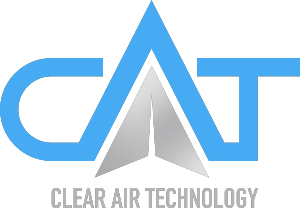Current Market Perceptions
There are several pioneers in the eVTOL field and some of these are attracting major institutional backing from both the automotive and aeronautical industries which have resulted in sizeable investment in research and development but they are still a long way from making significant advances in either the electric propulsion systems or battery technology although the latter is being helped by the wider market investment not least from the motor vehicle industry.
The solution being put forward by the major players almost unanimously appears to be multi-rotor, multi-battery vehicles capable of autonomous flight providing either a short-range taxi service or airport shuttle.
Autonomy appears to be a key cornerstone for these companies but we feel that although this technology is readily available in even the cheapest hobby drones to set this as an initial parameter for a full scale commercially available vehicle is way too onerous.
You only have to look at the problems surrounding autonomous vehicles with the billions already invested and then add the complications of flight and the associated regulatory bodies to see at least in the short term this is a non-starter.
A number of technological, ethical and regulatory challenges must be addressed before air taxis can be turned from a concept into a reality.
Source: PWC Drones Report 2018
We believe that the initial goal must be to get a vehicle to fly first with someone “qualified” at the wheel, initially this has to be a pilot with a licence already recognized by the regulatory bodies although we do see that with the assistance available from computers and existing technology that the technical requirements of this new generation of “pilots” will be akin to being able to drive a motor vehicle with a corresponding level of competency demonstrated with the issue of a new type of pilots licence.
The second avenue that these companies are investing in is the capability of pilot-less vehicles to carry large loads of freight which again is inherently flawed as both the motor technology and more critically the battery technology is predicted to be many years away from providing the power to weight and flight duration capabilities to make this viable.
Our Alternative View
We see the immediate future as being the provision of a medium-range affordable and environmentally-friendly form of aerial transport in the form of a lightweight, electric-powered vehicle capable of (initially) carrying two people which we can produce in volume for the cost of an executive saloon.
Our goal is to make our service affordable for the masses. This means driving operating costs down to the price of ridesharing and overtime to the cost of car ownership. Here are a few of the important cost drivers:
Maintenance Costs
Material to driving down maintenance costs is moving from traditional combustion engines to electric propulsion which removes thousands of parts and creates a far simpler vehicle. Maintenance is the largest cost for traditional helicopters, generally about ~30% of direct operating costs, driven by a high number of moving and critical parts. Moving to an electric power train removes thousands of parts and hundreds of critical components, reducing the amount of maintenance considerably.
Safety
Our goal is to make our electric vehicle just as safe as commercial airliners, it is possible to achieve these high levels of safety because of the simple design and high redundancy. Key to driving up safety is eliminating (1), critical parts, driving up (2) component reliability, and designing safe aerial (3) batteries.
1.Critical Parts are any part where the failure could have a catastrophic effect upon the vehicle and they ultimately limit achievable safety levels in helicopters. As we’re designing today, there should be no failure of any part in the drive train that results in a complete loss of power to the vehicle. Our vehicle will have no single point of failure that can cause a catastrophic effect.
2. Component reliability should be far higher for key electric power train components, there are significantly fewer moving parts in an electric motor than in a gas turbine or piston engine not to mention the lack of combustible materials which inherently make the whole process of an internal combustion engine inherently dangerous.
3.Batteries will be designed to be tolerant to cell failures, either open circuit or hard shorts that may result in individual cell thermal runaway.
Our mission is to advance the benefits of sustainable air mobility. By creating the world’s leading air mobility network, we will help push the world towards a zero-emissions future.
The flying car market will be worth £1.2 Billion by 2040.
Source: Morgan Stanley Research 2019
The Problem
Today half of the world lives in cities and the United Nations predicts that by 2050 that figure will rise close to 70%. The timescale around scaling ground infrastructure, roads and bridges are too long and costly and given their 2D nature can’t support a 3D city. If you can build an electric aircraft that has high performance, low cost, high safety and low noise – you have the ability to unlock a new dimension of travel – one that lives in the 3rd dimension and has almost infinite scaling potential.
Access to reliable data is the first step in tackling congestion, applying big data to create intelligent transportation systems is key to solving urban mobility problems.
In the UK the 2019 Global Traffic Scorecard analyzed the severity of congestion across the country’s top 102 urban areas. The findings show that congestion cost the UK economy £6.9 Billion in 2019 and on average UK road users lost 115 hours a year to congestion.

Source: INRIX providing mobility intelligence for leading automakers, transport agencies and businesses
A Golden Age of Aviation
We believe this is the start of a new golden age of aviation that we haven’t seen in 100 years. Morgan Stanley estimates this new electric aircraft market will be $1.5 trillion by 2040.
Similar to what’s happening when moving from the internal combustion engine to electric automobiles, moving to an electric eVTOL vehicle creates several advantages around cost, noise and safety – all fundamental areas that enable urban air mobility. We believe this is the start of a new golden age of aviation that we haven’t seen in 100 years.

